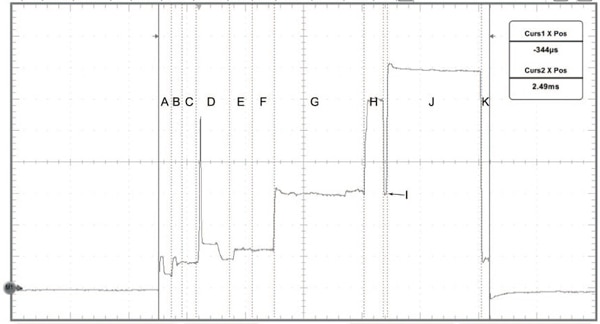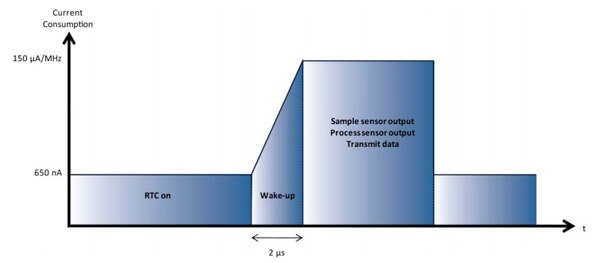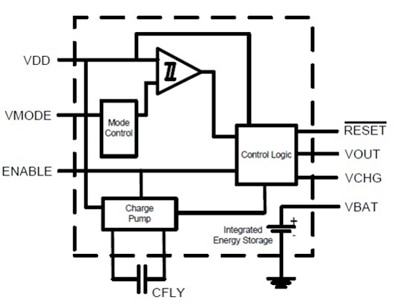Smoothing Peak-Power Requirements in Energy-Harvesting Applications
投稿人:电子产品
2013-11-20
Applications such as wireless sensors can exhibit peak-power requirements that exceed instantaneous energy levels available from ambient sources. Using a combination of low-power design techniques and power-conserving system design methods, engineers can smooth peak-power requirements to manageable levels. When these techniques and methods are used with ultra-low-power ICs and efficient energy-storage devices, engineers can take advantage of ambient energy even for wireless applications traditionally considered too power hungry for energy-harvesting solutions.
As with any low-power application, designers need to adhere to general considerations for low-power design, selecting ultra-low-power components and low-voltage ICs with their reduced current draw. For ambient-powered wireless applications the challenge of meeting peak-power demand often involves additional system-level considerations designed to match design functionality more precisely to application requirements.
For example, in a wireless application, radio operations often present the largest energy drain. In fact, the power profile for wireless applications often shows communications functions dominating other power-consuming system states. For a wireless sensor system, Figure 1 shows the relative draw on power as the system passes through its different operational states, including: sensor data conversion (A and B), data processing (C), oscillator startup/stabilization and chip ready (D and E), data message prepare to send (F), PLL calibration (G), Rx to determine clear channel (H), Rx to Tx mode switch (I), Tx to send data (J), and switch to low-power modes for radio and MCU (K).

Radio operations
As the largest power consumer, radio operations stand out as a clear opportunity to smooth peak-power requirements to better match energy available from ambient sources. For instance, engineers can often limit radio power to match application requirements for communications over extended distances. For applications that require longer distance communications, designers can reduce required radio power by using lower-frequency operations, as shown in the Friis equation for free-space propagation:
where
Pr = received power
Pt = transmitted power
Gr = receiver gain
Gt = transmitter gain
λ = wavelength
r = distance between receiver and transmitter antennas
At a given transmitter power level, use of lower frequencies results in greater received power at a given distance. Furthermore, use of a receiver with the highest possible sensitivity will help ensure low-error-rate communications with low-power transmitters.
Just as important, a properly configured antenna will optimize received energy and maximize transmitted energy. Beyond those design factors, even simple physical positioning of the wireless device can improve signals for low-power radios by reducing loss from obstructions, reflections, and multipath fading. With lower error rates, engineers can rely on lower-power radios to reliably meet communications requirements.
Communications protocols
Even with an optimized radio design, designers can further minimize power consumption by paying careful attention to the nature of data communications. Designers can significantly reduce peak-power requirements by minimizing the time the system spends in receive or transmit modes, sending the minimum amount of data required as infrequently as possible within the constraints of the application.
Engineers can reduce the time spent in Rx/Tx modes by using the shortest possible data packet. Minimizing packet size means not only transmitting the minimum amount of data required, but also dictates the use of a communications protocol with the least amount of communications overhead.
To further reduce the duration of radio operations, engineers can also opt for higher data rates, but this approach presents the wireless system designer with further tradeoff considerations: Higher data rates require greater radio power to reduce error rates, which may simply result in shorter but higher power operations — eliminating any savings in average power. In addition, higher data rates may require use of more complex techniques such as spread-spectrum communications. These signaling methods in turn require higher-frequency operations, requiring more power to overcome the reduced range associated with higher-frequency communications.
Engineers can also reduce the time spent in Rx/Tx modes by reducing the duty cycle of communications activities. For applications such as sensors with relatively slow-changing data, less frequent data transmissions may be acceptable. In contrast, designers can face significantly greater power requirements if the wireless sensor were allowed to operate unfettered at its maximum speed.
Standby modes
In achieving a more power-friendly communications design, engineers can find that they have simply shifted the heaviest periods of power consumption to other operational states. For example, if designers reduce packets to minimum size, PLL startup and calibration can become the dominant power consumer.
In fact, even if radio operations are reduced to a minimum, the availability of ready power from low-energy ambient sources remains a concern. At low-duty-cycle radio operations, device sleep states continue to consume power, even becoming the dominant power consumer in the extreme case. For these applications, designers need to turn to MCUs that not only feature ultra-low-power standby modes, but also exhibit very-fast transition times from standby modes to active mode. Each microsecond spent in transition contributes nothing to the application but results in consumption of increasing amounts of power as the device ramps up to normal operation (Figure 2).

Advanced MCUs such as Silicon Labs’ 32-bit EFM32 series, Microchip Technology's 16-bit PIC24F series, and Texas Instruments’ 16-bit MSP430F2xx series typically feature 1 to 2 µs wakeup times from standby to active state depending on operating frequency. These devices typically offer multiple power modes, enabling designers to trade higher standby power consumption for faster transitions to active mode.
Energy storage
With even the most careful attention to low-power design principles and communications efficiency, ambient energy sources may nevertheless not provide sufficient instantaneous power to meet peak-power demand. Consequently, ambient-powered applications often require the ability to accumulate sufficient energy and sustain it beyond the capacity of low-leakage storage. For these designs, engineers can turn to a variety of energy-storage devices including thin-film batteries or supercapacitors.
For short-duty-cycle applications with high peak-power requirements, supercapacitors’ ability to quickly charge and discharge provide an effective solution (Figure 3). For longer-duty-cycle applications, thin-film batteries characteristically exhibit low self-discharge rates, making them particularly well suited for extended operations.

Typically, designers will need to account for varying voltage levels by including voltage regulators to ensure proper charging of energy-storage devices. Integrated devices such as the Cymbet CBC3150 combine a solid-state battery with power-management circuitry (Figure 4). The integrated charge pump uses an external flying capacitor to double voltage output from low-voltage input sources. Engineers can temporarily disable the on-chip power-management feature to further reduce power consumption.

Conclusions
Wireless applications exhibit peak-power requirements that can exhaust power immediately available from ambient-energy sources. Using low-power design techniques, efficient communications protocols, and power-efficient ICs, engineers can smooth peak-power demands, enabling continuous operation even from weak ambient sources. System designers can combine available MCUs able to operate efficiently in low-power states with energy-storage devices to implement wireless applications powered by low-energy ambient sources.
免责声明:各个作者和/或论坛参与者在本网站发表的观点、看法和意见不代表 DigiKey 的观点、看法和意见,也不代表 DigiKey 官方政策。









